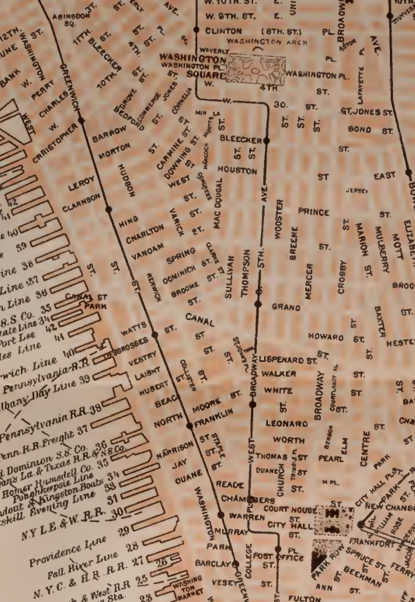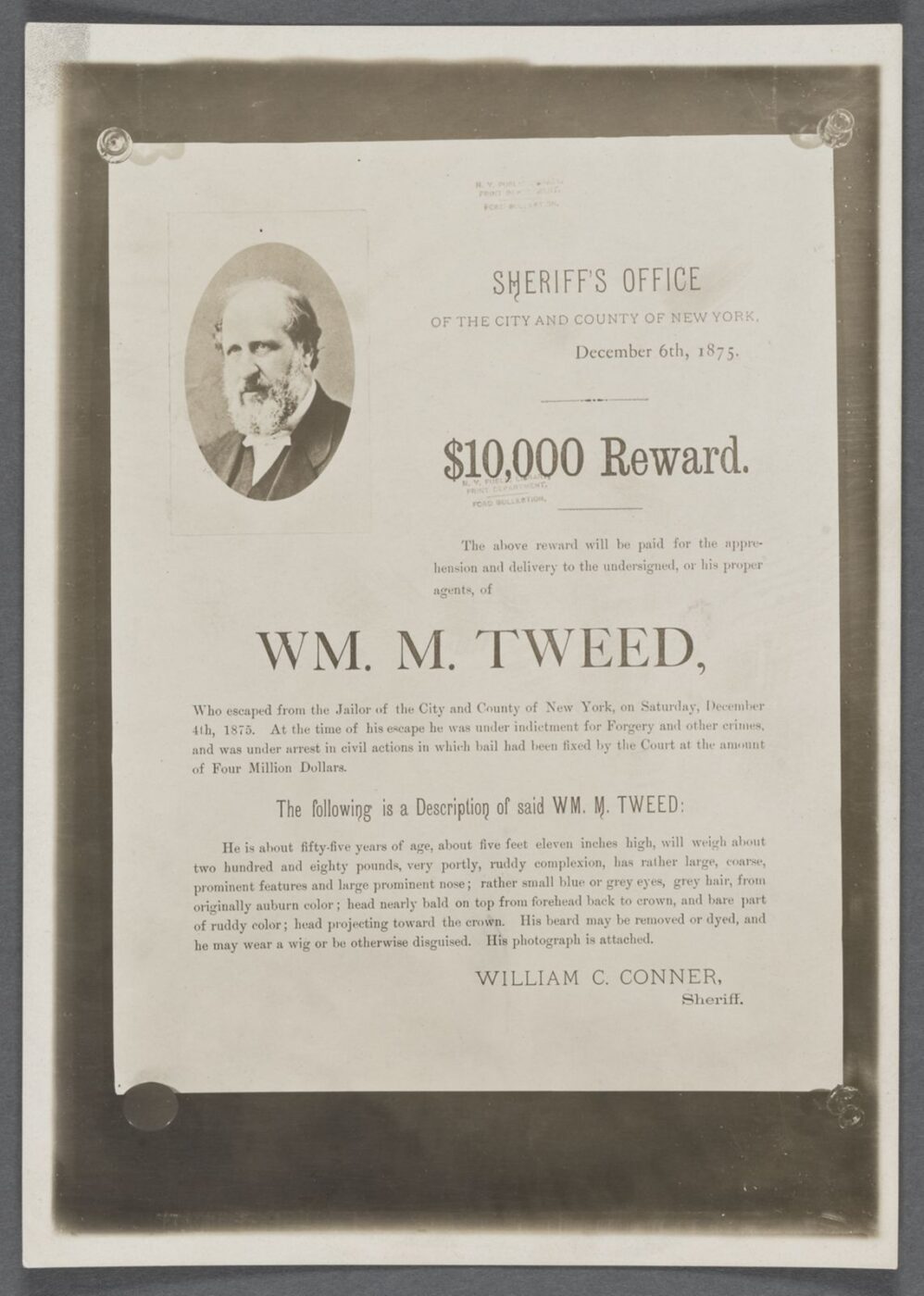The Forgotten Fifth Avenue South of Washington Square Park
If New York City streets had their own royal court, Broadway would be the old king and Fifth Avenue would be its fabulous queen. Just saying Fifth Avenue evokes glamour, iconic stores, incredible museums, and beautiful parks. Beginning here in Greenwich Village at the entrance of Washington Square Park, Fifth Avenue passes the Flatiron Building, Madison Square Park, the Empire State Building, the New York Public Library Stephen A. Schwarzman Building, Saint Patrick’s Cathedral, Central Park, the Met, the Guggenheim, Marcus Garvey Park, through Harlem and ends at 143rd Street. This most New York of streets began its life when its first leg from the park to 13th Street was approved by the city on September 27, 1824. Next year will be its bicentennial, and what a storied two centuries it has been! Read about how the city celebrated its first hundred years here. However, like any good bit of New York City history, Fifth Avenue’s life includes attempted imitation, corrupt 19th-century politics, and trying to inflate real estate values.


What is often forgotten from Fifth Avenue’s history, however, is that it used to extend south of Washington Square as well, through the South Village all the way to Lower Manhattan. From about 1870 until 1896, Fifth Avenue had a little sister, or extension, south from 4th Street down to Canal Street. This was South Fifth Avenue. Today between Houston Street and Washington Square Park, that street is now called LaGuardia Place, while everything south of Houston down to the World Trade Center is called West Broadway.

The names Chapel Street, Adams Place, College Place, Concord Street, Laurens Street, South Fifth Avenue, and today’s LaGuardia Place have all been used for various sections of West Broadway. Until the 1840s the section of today’s West Broadway south of Houston was known as Chapel Street. The name West Broadway was supposedly used as it was technically west of Broadway and to attract businesses and customers by being associated with the actual Broadway. By the 1850s, the new name stuck, and it seemed to have worked as it became a thriving area with hotels, shops, theaters, restaurants, and the depot for the Hudson River Railroad. However, while thriving businesses continued up to Washington Square Park, those north of Canal Street were of a rather different sort.

North of Canal Street, West Broadway was known at this time as Laurens Street. The street was named after Henry Laurens, a merchant and slave trader from South Carolina who became the second president of the Continental Congress. Tourists visiting the city enjoyed fine dining, and theater, and stayed in elegant hotels south of Canal. Whereas on Laurens Street, then given the moniker “Rotten Row,” they could find one of the city’s many thriving red-light districts. Saloons and brothels lined the street. But if renaming Chapel Street as West Broadway had transformed it into a thriving business district, a little rebranding of Laurens Street could possibly do the same thing. Or so William “Boss” Tweed hoped.
In 1870 it was decided something had to be done about Laurens Street. It had already been widened and now its act had to be cleaned up. Making it a continuation of West Broadway seemed the next logical step. “Boss” Tweed and his cronies had some very specific ideas about how to do so. It is speculated that Tweed and his associates probably owned property on Laurens Street. As imitation is the sincerest form of flattery, and a prestige’ name is a quick way to inflate property values, Laurens Street became South Fifth Avenue.

South Fifth Avenue did witness a redevelopment as the area became home to new burgeoning industries, from printing to communications. Oddly, as new cast iron buildings went up to house these new commercial ventures, the numbering started at the north by Washington Square Park with No. 1 South Fifth Avenue, and worked its way south with the numbers going up, in contradiction to the rest of the city’s south to north numbering system. South Fifth Avenue did have its renowned residents for a period, including Nikola Tesla and his laboratory at 33–35 South Fifth Avenue. But it wasn’t to last. Tweed was out, and by 1895 the businesses along South Fifth Avenue had enough of its bizarre numbering scheme, and so petitioned the city to have the name changed once more.

“…we would desire to call your attention to the fact that when this is completed it will make one broad continuous business thoroughfare from Dey Street to Washington Square, but, unfortunately, with three different names, viz.: College Place, West Broadway and South Fifth Avenue, which would seem to us very unfortunate. In addition to this, the numbering of South Fifth Avenue is made to commence at the northerly end, numbering southwardly, and is, as far as we know, almost the only street in the city which is numbered from north to south, and in consequence thereof makes considerable confusion to strangers seeking business places on the street. We would respectfully submit to you that it would seem to be worthy your consideration as to whether the entire street should not be given the name of West Broadway for its entire length… “
- “Proceedings of the Board of Alderman of the City of New York, From January 7 to March 26, 1895.” p. 355


In 1896 South Fifth Avenue became part of West Broadway again, and so it remained for the next seventy years. An idea was floated to rename a section of the West Broadway north of Canal once more in the 1970s to Jackson Pollock Place, but the final name change, for now at least, was for the section north of Houston Street, renamed LaGuardia Place in 1967. As with so many streets in our neighborhoods, LaGuardia Place once went by many different names. And don’t worry if Google Maps may no longer have a 130 South Fifth Avenue in Manhattan, but it still lives on today as 422 West Broadway .
